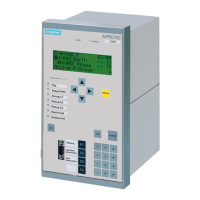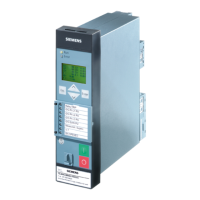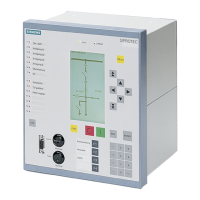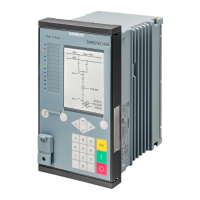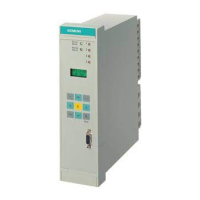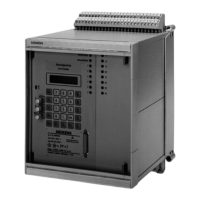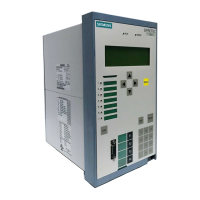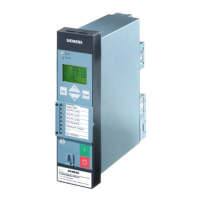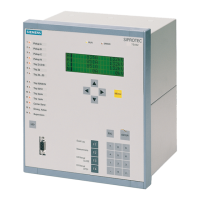1 Introduction
22
7SD610 Manual
C53000-G1176-C145-4
1.3 Characteristics
General Features • Powerful 32-bit microprocessor system
• Complete digital processing of measured values and control, from the sampling of
the analog input values, the processing and organization of the communication
between devices up to the closing and tripping commands to the circuit breakers
• complete galvanic and reliable separation between the internal processing circuits
from the measurement, control, and power supply circuits by analogue input trans-
ducers, binary inputs and outputs and the DC/DC or AC voltage converters
• Suited for lines with 2 ends, even with transformers in the protected zone (order
option)
• simple device operation using the integrated operator panel or a connected person-
al computer with operator guidance
• storage of fault messages as well as instantaneous values for fault recording
Differential
Protection
• Differential protection system for 2 ends with digital protection data transmission
• Protection for all types of short-circuits in systems with any starpoint conditioning
• Reliable differentiation between load and fault conditions also in high-resistant,
current-weak faults by adaptive measuring procedures
• High sensitivity in case of weakly loaded system, extreme stability against load
jumps and power swings
• Phase segregated measurement ensures that the pickup sensitivity is independent
of the fault type
• Suited for transformers in the protected zone (order variant)
• Detection of high-resistant, weak-current faults due to high sensitivity of the protec-
tive functions
• Insensitive against inrush and charging currents – also for transformers in the pro-
tected zone – and against higher-frequency switching transients
• High stability also for different current transformer saturation
• Adaptive stabilisation that is automatically derived from the measured quantities
and the configured current transformer data
• Fast, phase segregated tripping also on weak or zero infeed ends (breaker intertrip)
• low frequency dependency
• Digital protection data transmission; communication between devices via dedicated
communication links (in general optical fibre) or a communication system
• Communication possible via a single copper wire pair (typically 15 km, max. 30 km,
depending on used cable type)
• Synchronization via GPS possible. resulting in automatic correction of transmission
time differences thus increasing once more the sensitivity
• Permanent monitoring of the protection data transmission concerning disturbance,
failure or transfer time deviations in the transmission network with automatic trans-
fer time correction
• Phase segregated tripping possible (for operation with single-pole or single-and
three-pole auto-reclosure) (order variant)
www . ElectricalPartManuals . com
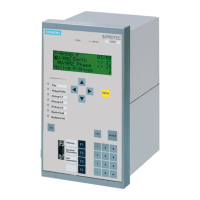
